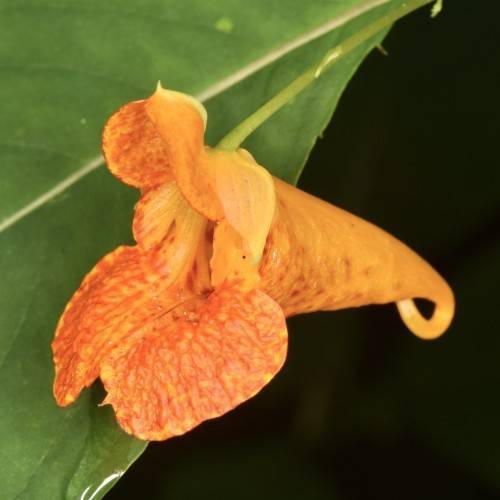
jewelweed
Impatiens capensis
Also Known As - orange balsamCycle:
Annual
Watering:
Frequent
Hardiness Zone:
2 - 11
Flowers:
Flowers
Sun:
Part shade,full shade
Soil:
Bog, Humus rich
Fruits:
Fruits In Summer Ready In Summer
Leaf:
Yes
Growth Rate:
High
Maintenance:
Moderate
Care Level:
Medium
watering
Jewelweed (Impatiens capensis) should be watered once a week, using about 1/4-1/2 cup of water per plant. During the summer months, when the plant is actively growing and producing flowers, you may choose to water slightly more frequently (2-3 times a week) during long dry spells. When watering, be sure to water the soil evenly, rather than allowing the water to concentrate in any 1 spot. Make sure the soil has drained and the plant is dry before the next watering. Jewelweed thrives in moist soil, but it does not do well when its root system is constantly wet.
sunlight
Jewelweed prefers full sun or partial shade, so it needs at least 4 hours of direct sunlight per day to do its best. However, it can still do well in light shade. When growing in sunnier locations, it's important to provide regular water and consistent temperatures for the plant to thrive. If growing in partial shade, it's important to note that the plant needs more water and light in the morning and less in the afternoon to avoid sunburn or damage.
pruning
Jewelweed (Impatiens capensis) is a native North American wildflower that is grown as an annual flower. Pruning is essential to keeping jewelweed healthy and looking its best. Once the plant is established, it should be pruned back to 8-10 inches from the ground each year in early spring, just before new growth emerges. Trimming off any dead or damaged branches will encourage new growth and blooms. The flowers on the tips of the stems should be left to the enjoy during the summer months. Pruning jewelweed after blooming ends will help control its spread. Removing the entire plant in the late fall or early winter will prevent it from becoming unruly. Pruning the plant regularly will also encourage air circulation, which helps to prevent disease.
